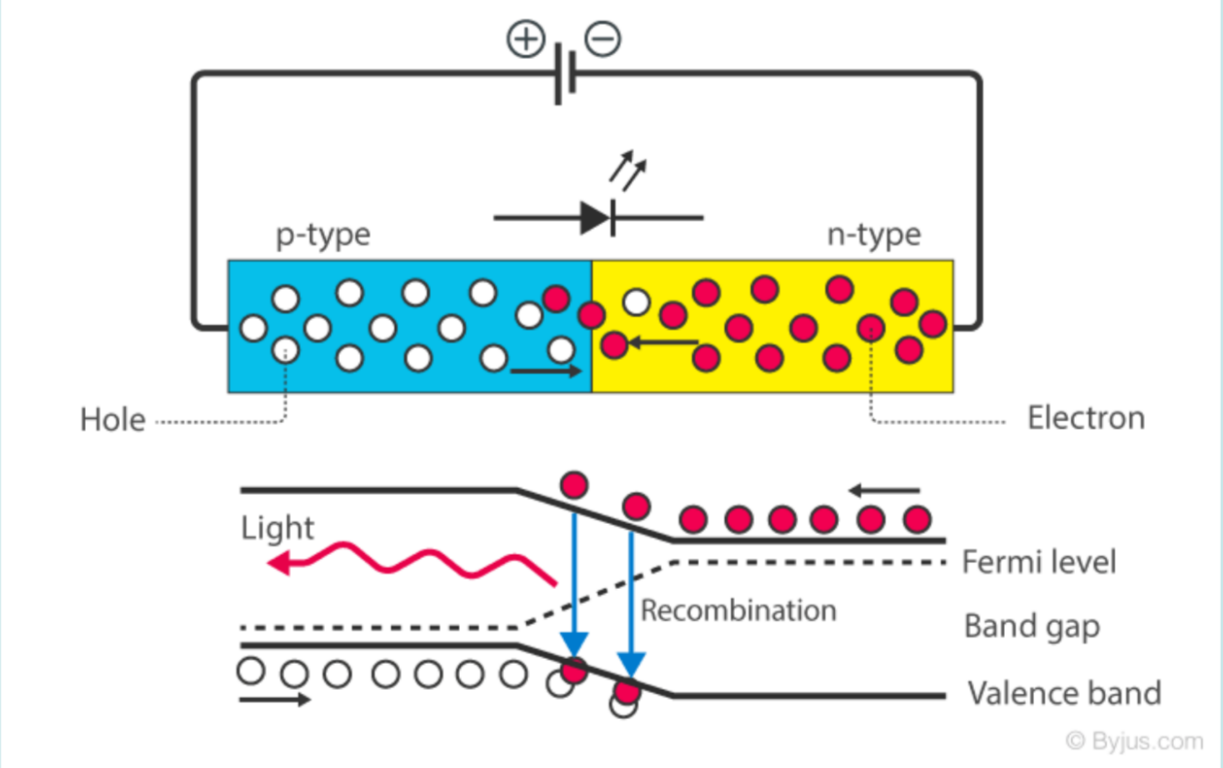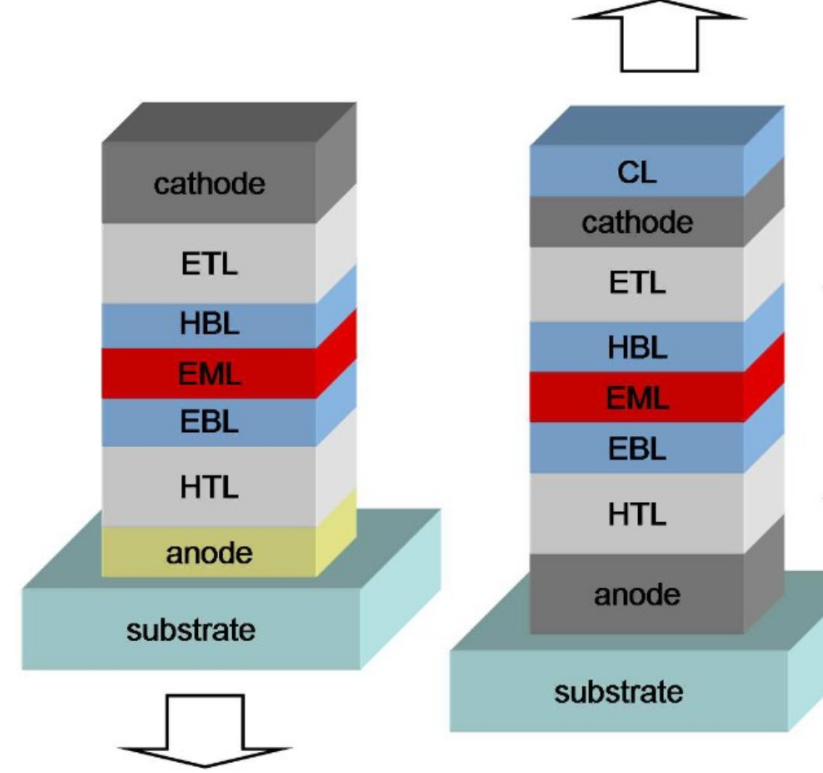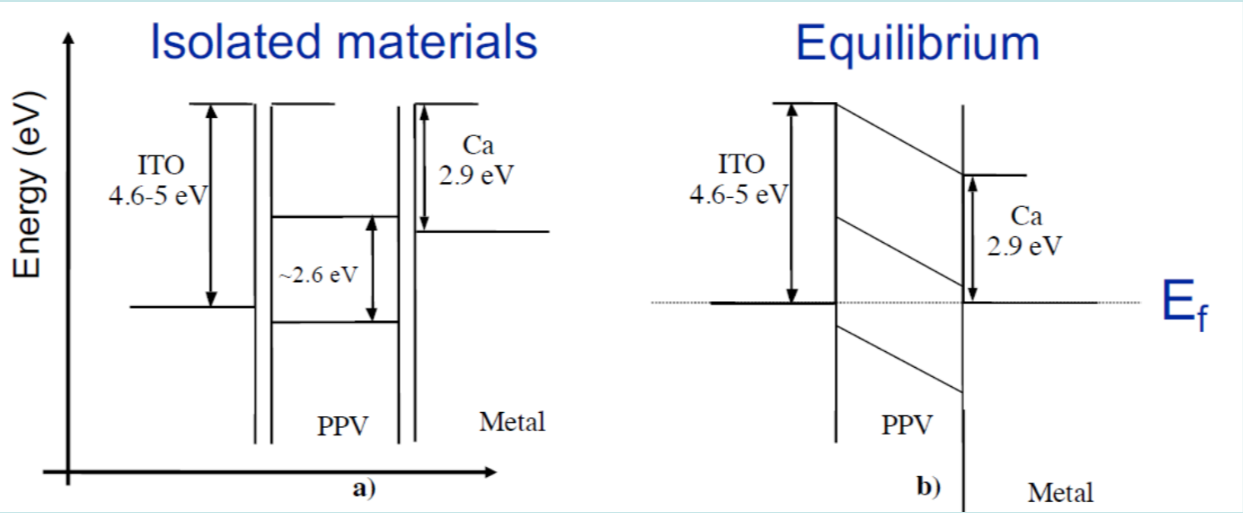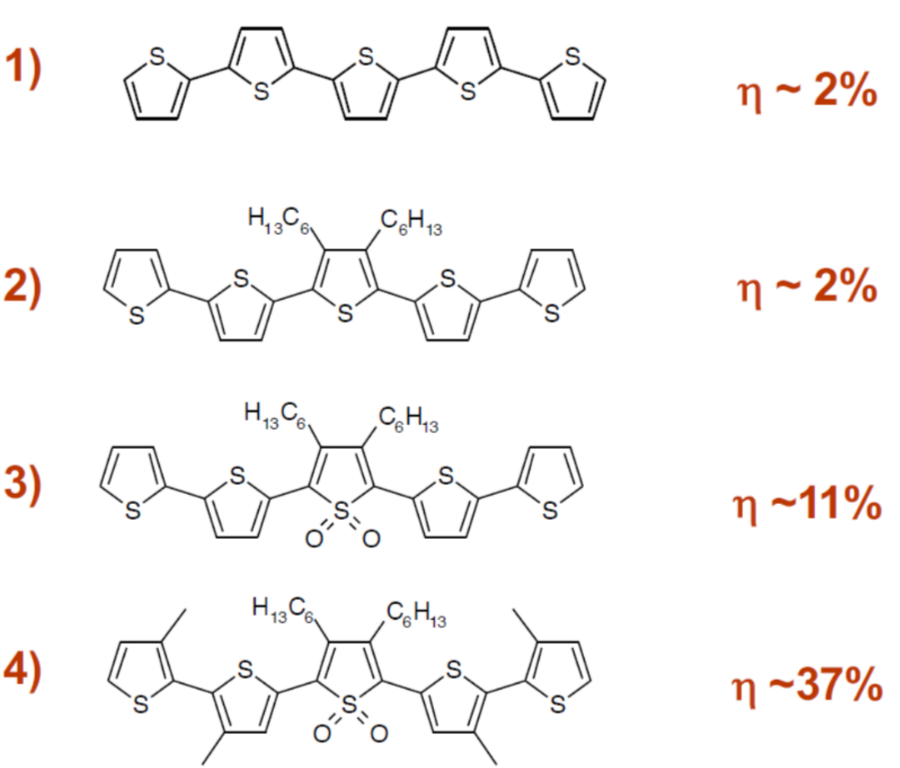OLED Distinctions
OLED’s vs PLED
- Both organi
- OLED made with smaller molecules, PLED made with polymers
- OLED created with vaccum evaporation
- PLED still in research
- Has potential for very large cheap flexible displays
AMOLED vs PMOLED
- PMOLED’s consume more energy
- Best for small screens
- Easy to make
- AMOLED
- Additional layer of transistors
- Fsater refresh rates
- Consumes less power
- Harder to make
Bottom Emission vs Top Emission Vs Transparent
- Bottom Emission: Cathode is opaque, Anode/substrate transparent
- Top Emission: Anode is opaque, cathode transparent
- Transparent: Both transparent
3 Generations of OLED
1’st Generation: Fluorescent OLED:
- only utilizes singlet pairs
- 25% efficient 2nd Generation: Phosphorescent OLED:
- Utilizes triplet pairs as well
Physics of OLED’s
Traditional LED Operation:
 In traditional LED, inject charges, fill holes, emit light
In traditional LED, inject charges, fill holes, emit light
Most simple OLED has 3 layers: Annode, cathode, and active layer. This is circa 1965 In OLED: Injection of charges, charge transport, exciton formation, radiative recombination
Charges have to be fast enough to form exciton If exciton is slow/weak, then charges move and don’t recombine radiatively
We want charges to move as fast as possible until the exciton phase
Structure helps with this. See diagram 
EBL is electron blocking layer
Learn this diagram

Strong forward bias: When light is emittted Reverse Bias: Hooked up OLED backwards Equilibrium: Not hooked up to power
Qualities of OLED’s
Luminous Efficiency
V: Driving voltage I: Current : Luminous Flux
Lumens/Watts
proportional to Incandecence (Candellas)/ W
Electroluminescence Quanum Efficiency:
Internal efficiency, disregarding losses in photon transport Assumes Phosphoresence does not exist
- Photo-luminescence efficiency. Can be improved by supressing nonradiative channels - Ratio of singlets to total excitons Maxes at 25% Increase radiative excitons - Excition formation factor Need more minority carrier to balance charge injection and transport
Optimizing OLED’s
Increasing : Suppress non-radiative decay channels
- Prevent aggregation Quenching 2. Optimize optical design, ensure injected charges don’t recombine too soon 3. Reduce contamination Preventing Aggregation Quenching:
- Prevent close-packing of chromospeheres
- Dilute with matrix substance
- Or design chemicals to not stack
A chemical that does this are polythiophenes Lower Crystalinity leads to higher efficiency
Oligothiophenes also do this:

FET materials desire the opposite properties of this, as seen last lecture
Optical device design
- Many engineering considerations
- Prevent waveguiding
- Prevent reabsorbtion
- Prevent refraction
Increase : Boost # of radiative excitons
- Maxes out at 25%
Methods:
Triplet-Triplet Annihilation: (TTA)
- Take two triplets, put it into a singlet
- Seen in Anthracene
- Total possible efficiency of 25% + 37.5% = 62.5%
- In practice, triplets provide only about 15%, raising total efficiency to 40%
Thermaly activated Delayed Fluorescence: (TADF)
- Reverse Intersystem crossing: turning triplet to singlet
- Requires heavy molecules, complex
- Potential 100% efficency
Hybrid Local Charge Transfer: (HLCT)
- Theoretical 100% efficiency as well
- Uses donor-acceptor molecule with triplet and singlet energies that are siminlar
Harvesting Phosphorescence:
- Theoretical 100% PLQY
Three methods:
- Foerster Transfer
- Dexter Transfer
- E-H Direct capture
Issues
- Hard to find materials that don’t have high TTA levels
- Difficult to find blue emitters
- Efficiency drop at large currents
- Dexter transfer is slow because of range
Increase : Improve e-h balance
Balancing Charge Injection:
Cathode:
- reduce work function by adding alkaline materials
- very useful for blue materials Anode:
- Reduce work function of ITO by:
- Self-assembled monolayers
- Spin Coated layers
- Layer-by-Layer deposition of progressively dedoped layers
- Oxygen plasma treatment
- Standard now
Balancing Charge Transport:
Make sure that charges move quickly
- Reduce excess majority carriers
- Introduce separate electrion and hole transporting layers
- Formation of hetrojunctions
Organic Photovoltaics
- Goal is to turn light into electrons.
- Opposite of OLED’s